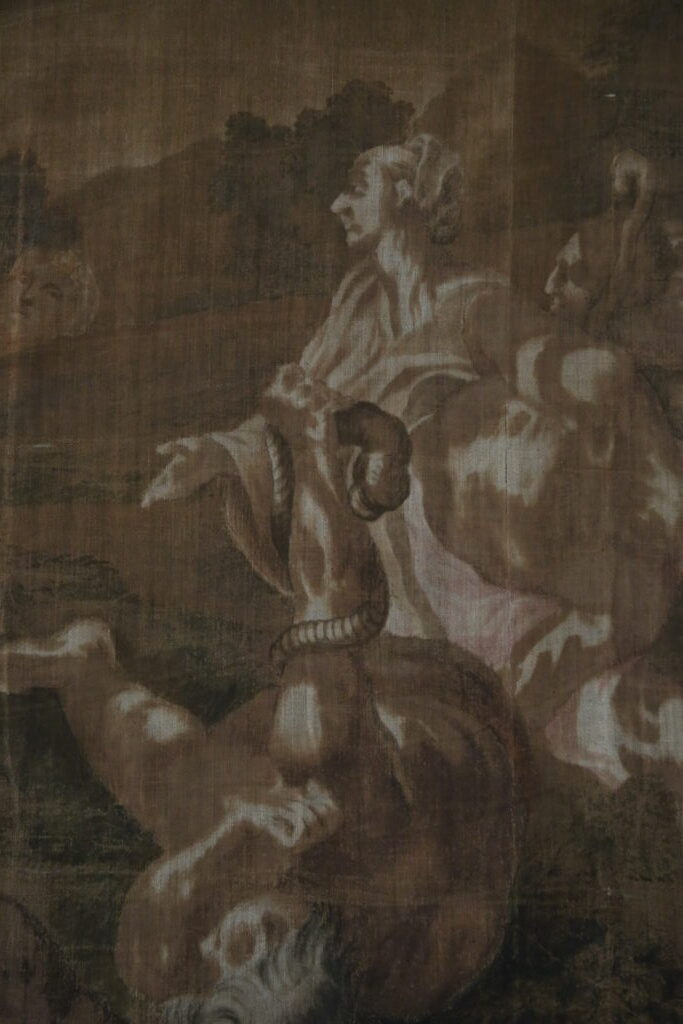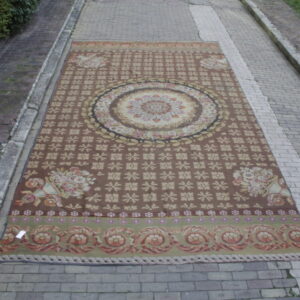Description
The scene depicted is taken from the story of Moses “The Lord said to Moses: “Make yourself a burning snake and place it on a pole; whoever has been bitten and sees it will remain alive.” Moses made a bronze snake and placed it on the pole; if anyone was bitten by a snake and looked at the bronze snake, he remained alive.” (Num 21:8-9).
This episode takes place during the Hebrews’ journey to the Promised Land. Amid a landscape of encampment tents, we see Moses, on the left, standing with outstretched arms, pointing with his rod to the bronze serpent he has just raised above a cross, on God’s orders, to ward off the plague.
In this vast composition, there are two opposing groups: on the right, in the foreground, the children of Israel who had doubted God are struggling against the snakes that entangle them; on the left, Moses is surrounded by supplicants. Four human figures can also be seen emerging at the top of the hill, in the center of the painting, their eyes turned towards the snake in supplication.
For his composition, the painter of this canvas drew heavily on the fresco created by the Italian Mannerist painter Ferraù Fenzoni (Faenza, 1562-1645) for the Scala Santa in Rome’s Palazzo Laterano. Fenzoni was commissioned in the 1580s by Cesare Nebbia, the artistic director of Pope Sixtus V (1585-1590). The latter entrusted Fenzoni with one of the staircase’s most important decorations: the fresco on the second landing, still in place today, depicting Moses and the Bronze Serpent.
Fenzoni’s fresco enjoyed great popularity, as evidenced by an engraving made by Francisco Villamena a few years later in 1597. Several museums have a copy of the engraving in their collections (Budapest Fine Arts Museum, Metropolitan Museum, British Museum, Boston Museum of art).
Taking Fenzoni’s work as a starting point, the painter of this canvas took liberties by breaking up the composition to include other groups of characters, such as the figure of the woman with two children in the left foreground. This Allegory of Charity is also a reworking, derived from the work of a 17th-century Italian artist, as evidenced by the print preserved in the graphic cabinet of the Carrara Academy in Bergamo (Allegorie della Fede, Speranza e Carità).
The decorative accents of this large-scale canvas are accompanied by quotations from works of the Italian Renaissance, reinterpreted in a personal and creative manner by an 18th-century painter.
-This type of painting on canvas belongs to a production traditionally known as “painted tapestries” or “jus d’herbe”. By this name, we mean paintings imitating tapestries and made with colors of vegetable origin, using water and without any preparation, on linen or silk textile canvases.
-Introduced in Italy, probably via France by cartonnier painters (who created tapestry models), the “jus d’herbe” technique was born in the second half of the 17th century as an alternative to tapestry, as it was much cheaper and quicker to produce.
These canvases were very popular, particularly for theater sets and churches, which encouraged a large-scale production of narrative paintings with religious themes, such as the one seen here. Like tapestries, these painted canvases could function as a series of several pieces to form a hanging, and were designed to fit a specific religious architecture.
Because of its iconography, this canvas was most likely displayed in a religious building on the occasion of religious ceremonies. Flexible, light and resistant, this type of canvas was easy to handle, offering the possibility of very practical ephemeral decorations (hung for display, then rolled or folded for storage).
-Ephemeral by their very nature, and of modest cost compared to other more precious works of art (tapestries, paintings), they did not benefit from any systematic conservation measures. This explains their rarity, since a large proportion of the production of these canvases has now disappeared.
-The canvas is lined. Presented as is, there are tears and damp stains.









Reviews
There are no reviews yet.